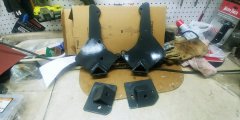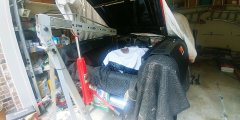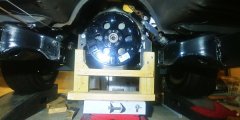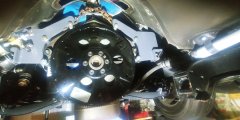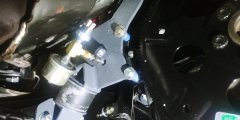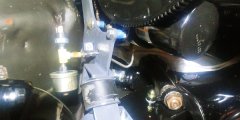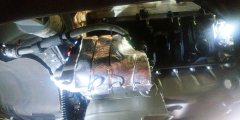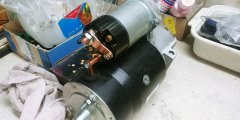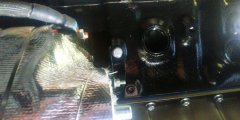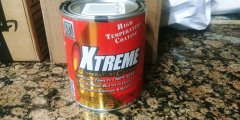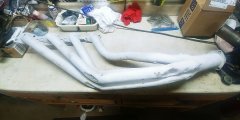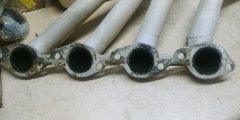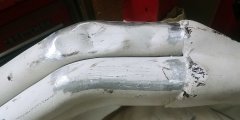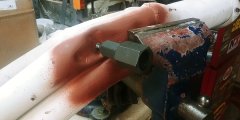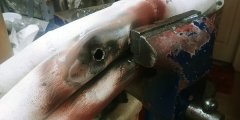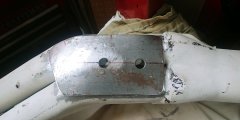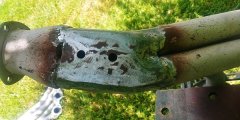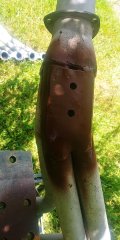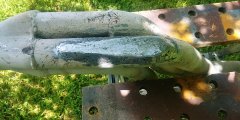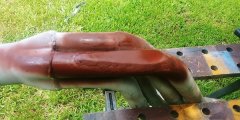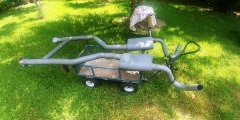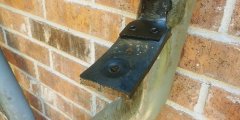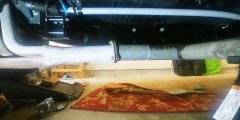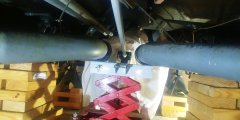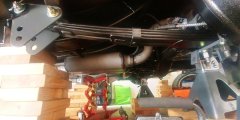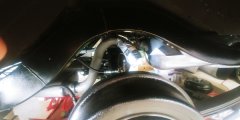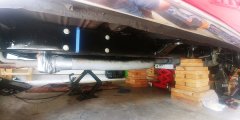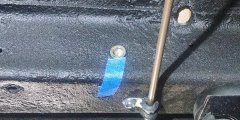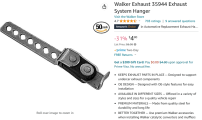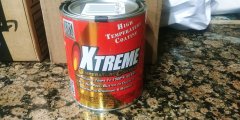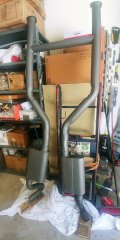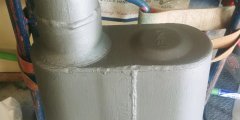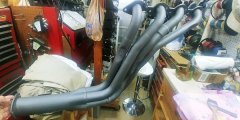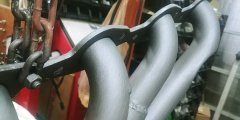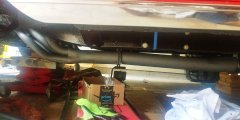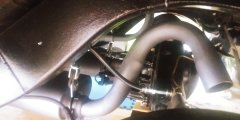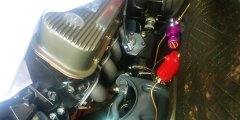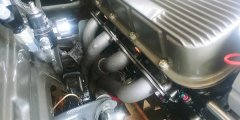Rick was kind enough to send me a pdf/jpg editing program, so I messed around with it on these pics

THANK YOU RICK
I had mentioned redundant grounding - I finished that today. It's often overlooked but I think it's really important to ensure a full ground path throughout the car. My definition of "redundant grounding" is duplicate grounding points not only at the front and rear of the car, but also two separate ground cables (grounding routes) at each of those front and rear areas.
The primary point of grounding from the trunk mounted battery is at the rear package shelf. It's essentially a bolt going through the body, tightened to capture the sheet metal, and extending below for a point of attachment for two frame ground cables, one on each side of the car.
This an older picture, the cables are now tidied up, but this shows the initial primary grounding point.
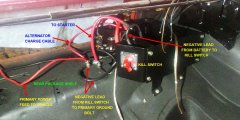
This is looking up from under the car at that rear package shelf. I made up two frame ground cables, one for each side of the car. Another case of using nutserts for the clamp attachments. The gray conduit is for the starter cable, I never run cables loose or unprotected under the car.
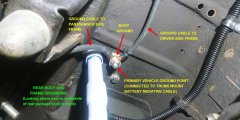
This is the driver side frame ground cable routing and attachment. Same case for the passenger side.
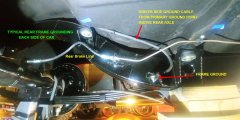
In the front I repeated the duplicate ground cables. This is from under the car, looking up where the transmission tunnel begins at the firewall. Engine is at the top of the picture. Those two body ground bolts not only attach the cables you see, but they also attach and connect ground to a grounding strip on the other side of the tunnel - this grounding strip provides ground for the interior circuits. Easy and convenient and will be hidden at the front of the center console.
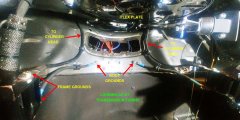
Here's where the two engine ground cables attach.

Obviously there are other more minor ground paths, such as through the engine mounts or other stuff attached to the body and/or frame. But for me, this redundant grounding has worked well - I used it for the past 30+ years on this car with zero electrical gremlins showing up. I think it's especially important when the battery is way back in the trunk to provide a good clear ground path for the starter, the #1 high amperage draw on the system. That particular circuit, along with the alternator charge circuit are key circuits for me - if they work well, usually everything else is cake.
 started in May 2020! and is still ongoing. I'm really lucky that my wife sees past the "I'll just do a couple of things to get it running"......
started in May 2020! and is still ongoing. I'm really lucky that my wife sees past the "I'll just do a couple of things to get it running"...... started in May 2020! and is still ongoing. I'm really lucky that my wife sees past the "I'll just do a couple of things to get it running"......
started in May 2020! and is still ongoing. I'm really lucky that my wife sees past the "I'll just do a couple of things to get it running"......
